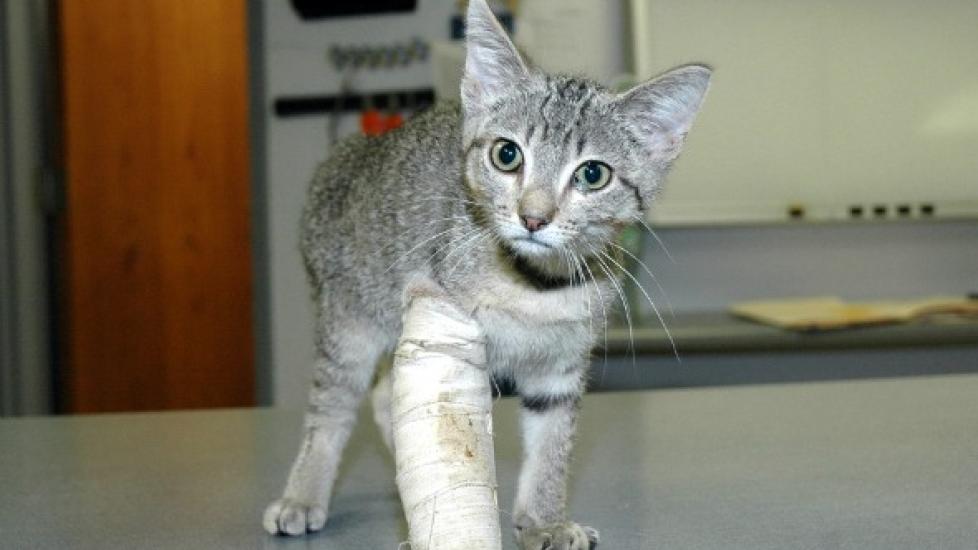Front Leg Injury in Cats
Brachial Plexus Avulsion in Cats
Cats can experience a forelimb issue after experiencing an injury due to jumping, being in a road accident, a traumatic fall, or after being caught in, or on, something. Prompt medical attention is advised, since the possibility of a spinal cord injury or other severe damage to the body will require that a proper examination and assessment be made. Injuries to the forelimb are sometimes referred to as brachial plexus avulsion.
Symptoms and Types
Cats that are experiencing this condition will often exhibit muscular weakness, absence of pain perception, loss of shoulder movement, and the inability to put weight on their paws.
Causes
The most common causes of foreleg injuries are road accidents, serious falls, or when cats get a foot caught in or on something while jumping or exploring.
Diagnosis
Magnetic resonance imaging (MRI) and computer tomography (CT) scans may be used to examine your cat's body for internal lesions. Your veterinarian will look for injuries to the spinal cord, or for any associated neurological issues.
Treatment
Treatment will be based on the severity of the injury. Bandaging the foreleg and protecting it from further injury is the most common response. Anti-inflammatory drugs are commonly given to decrease swelling, and pain relievers will be prescribed if your cat appears to be suffering. Amputation is sometimes required for injuries that cannot be repaired, or under circumstances where the injury is life threatening.
Living and Management
Following treatment, clinical monitoring of your cat is recommended so that improvements to the injured site can be assessed. One of the most common suggestions is to confine and injured cat so that it will not further complicate the injury. An enclosed area, or cage, can be used to encourage your cat to rest and to ensure that the injury heals fully. Protective swaddling, or binding, is also recommended for keeping the limb in place. Physical therapy may be prescribed for regaining muscle strength during rehabilitation, after the initial severity of the injury has passed. It is important to observe your cat's behavior following treatment as there is a potential for infection if your cat rubs its paws repeatedly on the ground. Also, it is important to deter your cat from mutilating itself in an attempt to stop the pain and the associated healing sensations (e.g., itching). In most cases, the injury will resolve within a few months of the initial prognosis and treatment.
Prevention
Because animals can be injured even while doing things that are apparently harmless, and even in the safest homes, there are really no preventative measures for this medical issue. Keeping your cat indoors, or on a leash while out of doors, will go a long way toward prevention of road or environmental accidents.
